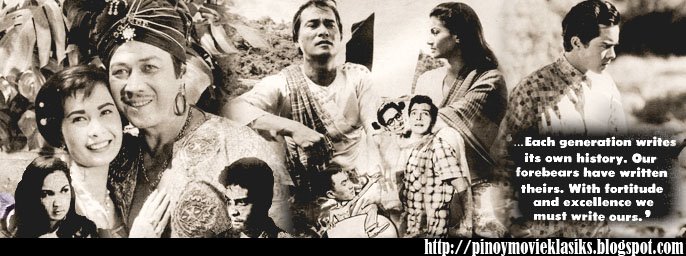In the middle of research and mourning over David Cook's defeat over Archuleta in the finale performance on American Idol, I found pictures during my visit to Mowelfund. Sounds familiar? Let me take you inside the Movie Welfare Workers Foundation a.k.a. MOWELFUND :)

Mowelfund is the leading film and resource center manned by competent, creative and compassionate staff, workers and officers working under a visionary and value-based leadershipthat ontributes to the overall improvement of the Philippine Film Industry and the Empowerment of the communities it serves.
The foundation aims to develop and uplift the state of Philippine culture through educational and developmental initiatives, responsive welfare programs, local and international linkages and partnerships, and resource generation.
(Source: Mowelfund Vision-Mission)
As I enter beyond the gates, I saw this lovely wall of stars in a film strip indicating the famous stars in the industry through the years.




That's not all... The main reason why I came here is to interview one of my resource persons that has to be involved in foundations for the movie industry.
Meet.. Mr. Emilio Dollete, Assistant to the Executive Director (Boots Anson Roa) of MOWELFUND :)

Sorry for the poor resolution.
Anyway this is the transcript of our interview: (I'll only be including the important questions so as not to bore you :p)
JG (Justine Galvez): It was in the early years of the 50's , 60's and 70's when Filipino movies were much at its peak. There were a lot of cinematic breakthroughs and much talent were being honed. What do you think hindered the growth of the Philippine movie industry after those decades?
ED (Emilio Dollete): Politics, Inordinate Taxation, Greed, Commercialism, Culture and Tradition, Religion, Perception of Film as a form of amusement, Film Piracy or Violation of Intellectual Property.
JG: Can you say that veteran actors and actresses do not get the same treatment as they should in other countries? If you agree, how come?
ED: In other countries, veteran actors and actresses are treated with utmost respect as an accomplished artist and not as an actor/actress. This is because of our country's orientation and the way filmmaking industry is perceived. Filipinos are geared towards financial security and not financial freedom. We want to work in high-paying jobs to be able to do what we want. However, we fail to realize that this high-paying job is like a chain that links to us to our material needs.
In filmmaking, you are free and if you do an excellent job, you earn a lot too.
JG: Movie preservation is a serious concern in the industry. What specific movies do you think should both government and private sector undertake to increase movie preservation and restoration? And how will this contribute to the movie industry as a whole?
ED: The government should increase its budget for education and the promotion of culture and the arts. A law must be passed to include in the General Appropriations Act allocation for the preservation and restoration of our old films. Just like what Thailand is doing.
JG: Piracy is another serious concern. Is the government doing enough against piracy? What other efforts do you think should be done?
ED: It is difficult to answer the question of Piracy because there are those who allow these things to happen for profit. They say when money talks everybody listens. Also in my opinion there are already too many government agencies tasked to handle piracy. They should maintain only one and provide full support to that agency.
JG: What do you think of film festivals? What is the coverage of a classic film festival?
ED: Film festivals are fantastic because it is thematic in nature. You get to watch films hving a common theme expressed differently. Classic films can be based on the genre or the films of a specific actor/ actress up to a certain period.
JG: What other events does Mowelfund sponsor? What do you think of Mowelfund sponsoring a classic film festival?
ED: Mowelfund has two advocacies: Welfare and Education. In the welfare aspect, Mowelfund provides the medical, surgical, hospitalization and funeral assistance which the state cannot give to the workers in the movie industry because of the contractual nature of their work. Also, we provide alternative livelihood for them in the light of the current slump in the film industry. The Foundation also came up with a housing project in cooperation with LGU's and NGO's.
Mowelfund has been doing film festivals for 15 years in cooperation with NCCA and private corporations.
JG: How do you feel about the current state of our movie industry?
ED: There is hope. If the members of the industry are united, they can reclaim lost glory. The Foundation has again taken the initiative to revive the industry by inviting mainstream and independent practitioners to teach during its ongoing intensive filmmaking workshop.
And that's about it.. to end this entry, i'll be showing more pictures inside their wonderful museum. :)

When we were influenced by the Spaniards we used these terms for the movies

The first release of camera meant for only one person

The Mother Lily of the Golden Age Dona Sisang and her LVN productions

The earliest film productions to close shortly after the war

The Golden Age - My inspiration for my event

Manuel Conde as Genghis Khan - Did you know that this movie was the basis for America's own version of not exactly Genghis Khan but something like it. See? We, Filipinos have the potential for major growth.
Last but not the least:

Me portraying Anita Linda
Hope you enjoyed that mini trip. Sorry I can't upload everything. :o
Til next time,
Justine :)





